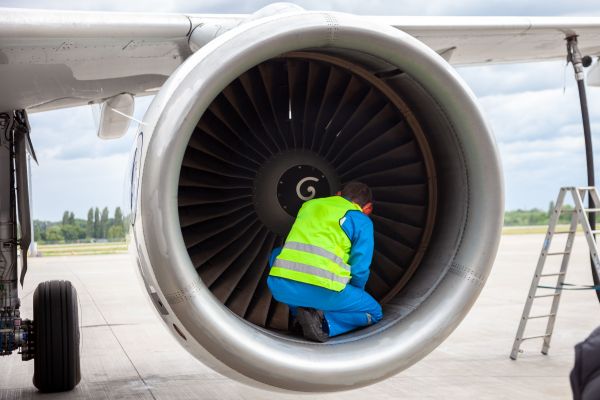The Federal Aviation Administration (FAA) is tasked with overseeing aviation safety in the United States, a responsibility that includes ensuring that pilots and aviation professionals are fit to operate aircraft safely. Among the various programs implemented to uphold these standards, the FAA HIMS AME Program plays a critical role. The Human Intervention Motivation Study (HIMS) and the Aviation Medical Examiner (AME) collaboration form a comprehensive system aimed at addressing medical conditions that could affect a pilot’s performance and safety.
The Purpose of the FAA HIMS AME Program
The FAA HIMS AME Program is designed to address the challenges of managing medical conditions among aviation professionals, particularly those related to substance use and mental health. The primary goal of the program is to ensure that pilots who have experienced issues such as substance abuse or mental health disorders are safely reintegrated into the aviation workforce. This program not only focuses on recovery but also emphasizes ongoing monitoring and support to prevent recurrence.
The Role of FAA HIMS AMEs
FAA HIMS AMEs are specially trained Aviation Medical Examiners who work in conjunction with the HIMS program to evaluate and monitor pilots who have had substance use disorders or other significant medical conditions. These AMEs receive advanced training to handle complex cases and provide a thorough assessment of a pilot’s fitness to fly. Their role includes:
- Initial Evaluation: Assessing the pilot’s medical history, treatment progress, and current condition.
- Ongoing Monitoring: Regularly reviewing the pilot’s health status and compliance with treatment programs.
- Certification: Determining whether a pilot meets the FAA’s medical standards for certification.
How the FAA HIMS AME Program Works
The FAA HIMS AME Program involves a structured process that includes several key components:
1. Referral and Initial Assessment
Pilots who have experienced medical issues such as substance abuse or mental health disorders are referred to the HIMS program by their primary care physicians or other medical professionals. An FAA HIMS AME conducts an initial evaluation to determine the extent of the condition and the pilot’s readiness to return to flying duties.

2. Treatment and Rehabilitation
Once a pilot is assessed, a tailored treatment plan is developed in collaboration with healthcare providers. This plan may include counseling, medication, and other therapeutic interventions. The FAA HIMS AME monitors the pilot’s progress and ensures that the treatment plan is effective in addressing the condition.
3. Re-evaluation and Certification
After completing the prescribed treatment, the pilot undergoes a re-evaluation by the FAA HIMS AME. The examination assesses whether the pilot has met the required standards for safe operation of an aircraft. If the pilot is deemed fit, the AME will provide the necessary certification to return to flying duties.
4. Ongoing Monitoring and Support
The program emphasizes the importance of long-term support and monitoring to prevent relapse and ensure continued safety. FAA HIMS AMEs continue to work with pilots to provide support and address any emerging issues that may impact their fitness to fly.
Benefits of the FAA HIMS AME Program
The FAA HIMS AME Program offers several benefits, both to aviation professionals and to the industry as a whole:
1. Enhanced Safety
By ensuring that pilots with a history of substance abuse or mental health issues are thoroughly evaluated and monitored, the program helps maintain high safety standards in aviation. Pilots who have successfully completed the program are less likely to experience relapses or impairments that could jeopardize flight safety.
2. Supportive Rehabilitation
The program provides a structured and supportive approach to rehabilitation, helping pilots address their medical conditions and return to their careers. This supportive environment promotes successful recovery and reintegration into the aviation workforce.
3. Industry Confidence
The FAA HIMS AME Program fosters confidence within the aviation industry by demonstrating a commitment to safety and compliance. The rigorous evaluation and monitoring processes reassure stakeholders that pilots are medically fit and capable of performing their duties safely.
Challenges and Considerations
While the FAA HIMS AME Program has proven effective, it faces several challenges:
1. Stigma and Privacy
Pilots may be reluctant to seek help due to the stigma associated with substance abuse or mental health issues. Ensuring privacy and confidentiality is crucial to encouraging pilots to seek the necessary support.
2. Resource Allocation
The program requires significant resources, including trained FAA HIMS AMEs and specialized treatment providers. Ensuring adequate resources and support for the program is essential for its continued success.
Conclusion
The FAA HIMS AME Program is a vital component of the FAA’s efforts to ensure aviation safety and compliance. By addressing medical conditions that could impact a pilot’s performance, the program contributes to a safer and more reliable aviation industry. The collaboration between FAA HIMS AMEs and the HIMS program exemplifies a commitment to supporting pilots and maintaining the highest standards of safety in aviation. Through ongoing evaluation, treatment, and support, the program helps pilots achieve and sustain their fitness to fly, ultimately benefiting the entire aviation community.

